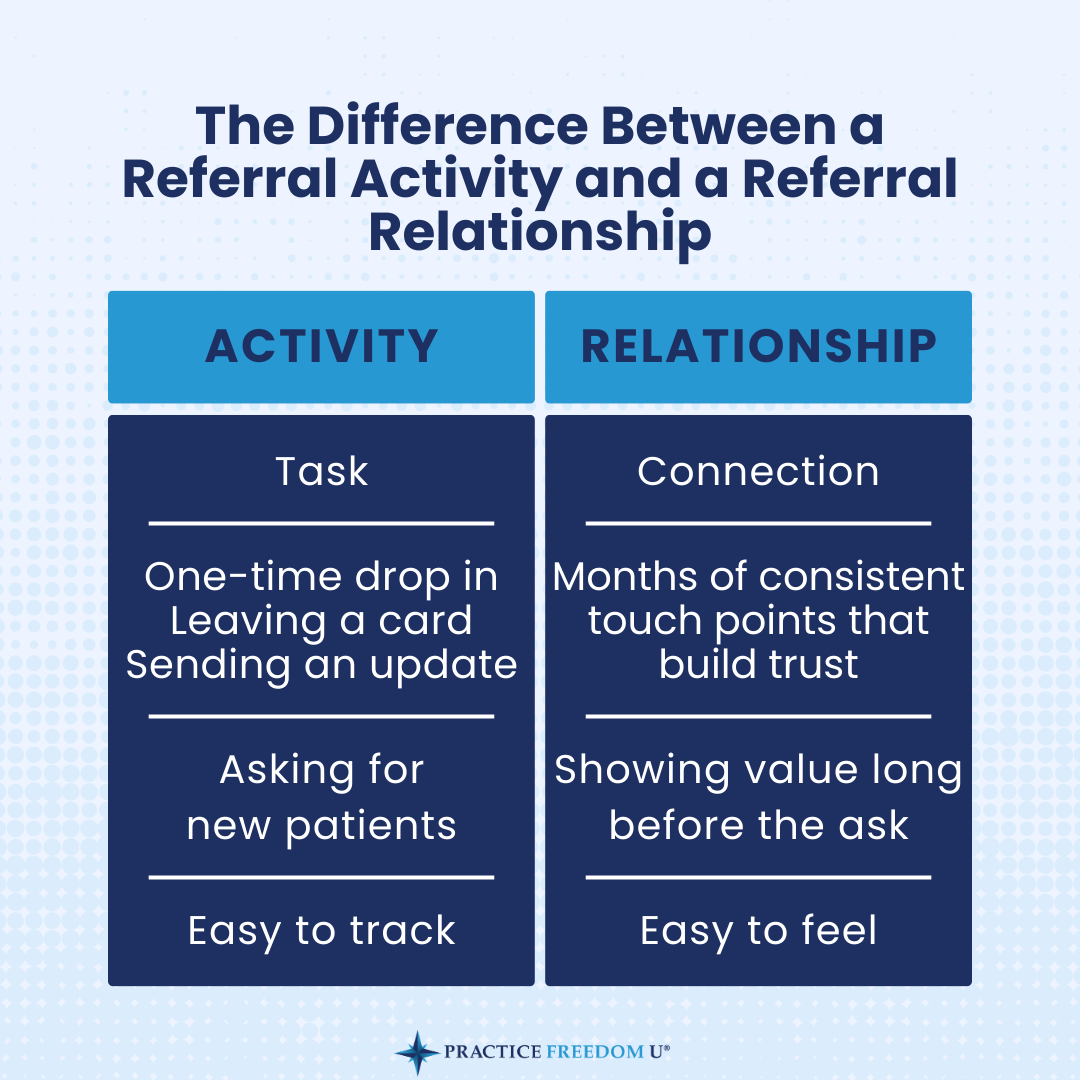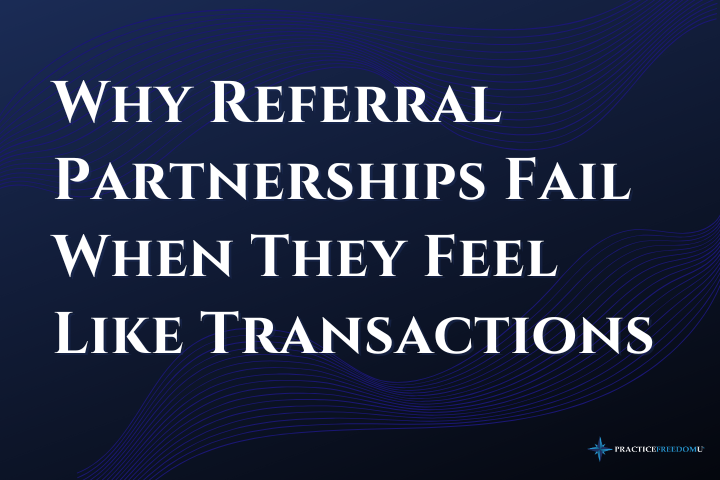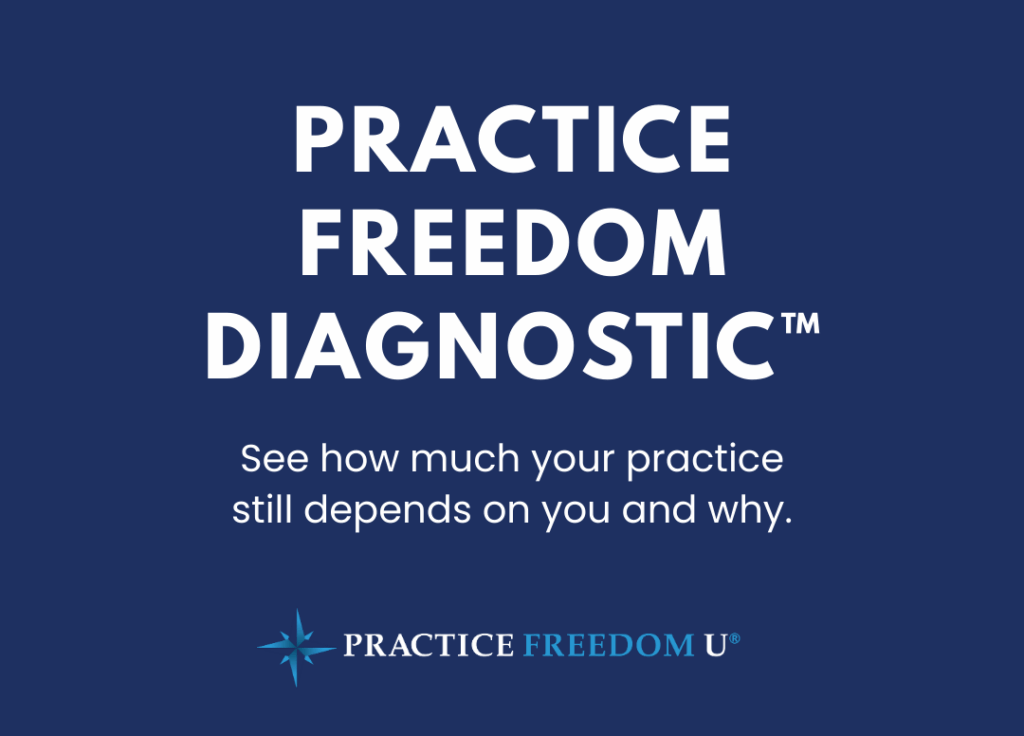You have probably been told that referrals are simple. Drop by a few offices. Hand out cards. Send some updates. Stay visible. The message sounds straightforward. Build relationships and the referrals will come.
Yet for many practice owners, the results never match the effort. The flow stays unpredictable. A few good months followed by long dry spells. A handful of clinicians who send people your way, then suddenly go quiet. You try again, push harder, and wonder what you are missing.
Referral partnerships fail when they feel like transactions instead of relationships. The more you reach for quick wins, the more you push away the long term partnerships that actually create steady, high quality referrals.
Let us look at why that happens and what you can do differently.
The Transaction Trap
Most owners want to build strong referral relationships, but the way they reach out ends up feeling transactional. It looks like this:
- A quick office drop in
- A stack of business cards
- A moment of small talk before rushing out
- An email asking for more patients when the schedule slows
- A holiday basket once a year
None of these actions are harmful. They simply are not enough to create real connection. They feel rushed. They feel one sided. They feel like campaigns instead of rapport.
A transactional approach works for short term bumps. It does not create consistency. Referrals become unpredictable because the relationship never deepens. It never becomes mutual. It never becomes meaningful. (Forrester)
You cannot fix that with more drop ins, more cards, or more charm. You fix it by shifting how you think about partnerships in the first place.
What Referral Sources Really Want
Referral sources do not want a sales pitch. They want clarity, warmth, and genuine interest in their patients.
They want to know:
- Will you take great care of the people they trust you with
- Will communication be easy
- Will your practice be reliable
- Will you follow through
- Will you help make their job easier
In short, they want confidence that their patients are in good hands.
Partnerships grow when someone feels supported, respected, and appreciated. They fade when the relationship feels like a transaction or a series of asks. (Gartner)
The Difference Between a Referral Activity and a Referral Relationship
Here is the distinction most owners miss.
Referral activity is about the action you take.
Referral relationship is about the feeling you create.

Activity is the task.
Relationship is the connection.
Activity is a one time drop in, leaving a card, or sending an update.
Relationship is months of consistent touch points that build trust.
Activity is asking for new patients.
Relationship is showing value long before the ask.
Activity is easy to track.
Relationship is easy to feel.
Owners who stay stuck focus on the activities. Owners who grow focus on the relationship behind them.
The Relationship Gap Most Owners Do Not See
Most referral problems do not come from lack of effort. They come from a relationship gap the owner never notices.
The gap shows up as:
- Outreach only during slow weeks
- No clear understanding of what the referral source truly values
- No shared definition of the right patient
- No consistent rhythm
- No follow up after the first meeting
- No personal connection beyond the ask
- No reason for the referral source to feel loyalty or partnership
You might think you are staying visible, but the other person feels like they are part of a transaction. That is why the flow never becomes steady. The partnership never becomes real. (Wynter)
How to Build Referral Partnerships That Last
You do not need complicated campaigns. You need a simple, relationship driven rhythm that shows you care, consistently and clearly.
Here is what works.
1. Create a simple monthly rhythm
Reach out once a month. Short, warm, steady.
Examples:
- A quick message sharing a patient success story
- A check in to see how their month is going
- A note of appreciation for someone they sent your way
- A small update about something you improved in your practice
Predictability builds trust.
2. Open with value, not requests
Most owners reach out only when they need more patients. That is when the relationship feels transactional.
Start with value instead:
- patient progress updates
- insights that help their work
- a tip that makes collaboration easier
- gratitude for their trust
The moment you stop asking first, everything shifts.
3. Get clear on what a good referral looks like
Referral sources cannot send the right people if they do not understand what you do best.
Give them clarity:
- who you help
- what you specialize in
- what makes your approach different
- what type of patient has the best results
Clarity creates confidence. Confidence creates referrals.
4. Stay consistent, especially when you are busy
The number one reason referral partnerships fail is inconsistency.
The rhythm needs to continue even when your schedule is full. That is what signs a real partnership, not a marketing tactic.
5. Keep communication warm and personal
Not scripted. Not corporate. Just human.
A simple note:
“I appreciate you thinking of us. Your trust means a lot.”
Or:
“We loved working with your patient. They are progressing well.”
Warmth creates connection. Connection creates loyalty.
What Happens When Partnerships Replace Transactions
When you build relationships instead of campaigns, the entire dynamic changes.
You see:
- steady, predictable referral flow
- better fit clients
- easier communication
- more trust from the people who matter
- less stress during slow seasons
- more ownership from your team to maintain the rhythm
You stop hoping for referrals. You start receiving them.
You stop chasing short term spikes. You start building long term relationships.
You stop relying on hustle. You start relying on consistency.
This is how you create a referral engine that works year round.
Referral partnerships fail when they feel like transactions. They grow when they feel like relationships.
The shift is simple.
Stop chasing quick wins.
Start building genuine connections.
If you want support creating a simple referral system your team can actually maintain, you are welcome inside the Practice Freedom Community. It is where owners learn how to build predictable growth through real relationships, not one time outreach.
If referrals feel hit or miss, take the Practice Freedom Diagnostic™. It shows how your practice operates day to day, where you are stuck in the weeds, and what to adjust so referral relationships become consistent instead of reactive.
————————————————————-
Are you ready for a coach? Join the hundreds of physical therapy owners who are building the practice of their dreams with the support, guidance and direction of a Practice Freedom U Coach. Take the first step towards creating a business that sets you free by scheduling a Discovery Call


